Menu Toggle
In this issue
Section 1
Message From the President
Bargaining
Section 2
Executive Director's Message
Putting the PEA's Vision to the Test
Section 3
Adventures of a Paralegal
From Dusty Huts to Mountain Sheds, Ali Elman, Law Society Paralegal, Goes Where She's Needed to Help British Columbians Words by Jessica Natale Woollard Photos by Jeff Topham
Section 4
Forests For the Future
BC's professional foresters help grow resilient trees to withstand climate change Words by Jessica Natale Woollard Photos by Darren Rico
Section 5
Supporting Children for a Stronger BC
Public Access to Free Licensed Psychologists Provides Early Intervention for Children and Youth with Mental Health Concerns Words by Jessica Natale Woollard Photos by Aaron Lutsch
Section 6
Modern Apothecary
Ministry of Health Pharmacists Make Complex Decisions About Medications for the Good of the Province and its Residents Words by Jessica Natale Woollard Photos by Aaron Lutsch
Section 7
UVic Chapter History
It's been 30 years since members at the university of victoria came together to organize the professionals on campus From Duty with Dignity by Ben Isitt
Section 8
Table Talk
Meet the Association Executive Table Officers Who Were Elected During Our 2024 Convention
Section 9
PEA Updates
Message From the President
Bargaining
Our PEA members and public sector professionals are the foundation of a strong, thriving province: geoscientists in the GLP are keeping our dams and rivers safe, physiotherapists in the HSP are delivering frontline services and lawyers at Legal Aid BC and the Family Maintenance Agency are ensuring justice for families everywhere.
That’s why I want to take a moment to talk about the importance of this next round of bargaining. With the rising cost of living, increasing workloads and growing pressures on public services, now is the time to ensure that our members are properly valued and supported. Fair wages, strong benefits and safe, sustainable working conditions are not just necessary—they are essential to keeping BC’s public services strong.
Early this year, our members at the Law Society of BC took a stand for fair wages and equitable benefits, with an overwhelming 93% voting in favour of job action. This show of solidarity followed an impasse in negotiations over wage adjustments and integrating paralegals and officers into the same benefits structure as lawyers. The pressure worked—a tentative agreement was reached on February 5.
We are also excited to welcome the professionals from the BC Society for Policy Solutions (BCSPS) to the PEA. These workers bring a wealth of expertise in advancing progressive policy solutions that are rooted in BC communities. They have been instrumental in developing policies that promote equity, diversity and inclusion. BCSPS was founded by individuals from the Canadian Centre for Policy Alternatives–BC Office (CCPA-BC), which closed in early 2025.
This round of bargaining is about more than just a contract—it’s about respect for the work we do and the future of public service in BC. Your solidarity and engagement will be key in securing a fair deal, especially as we face such uncertain and volatile times with our economy and our neighbours down south.
 Cliff Haman
Cliff Haman
PEA President
Executive Director's Message
Putting the PEA's Vision to the Test
The PEA’s vision is a future where professional expertise is valued, worker rights are protected and public services thrive. This is achieved through our members, who are dedicated to strengthening the economic, social and environmental well-being of our communities. Our vision will be put to the test. Will we rise to the challenge? How will we do this in the coming months?
During this time, solidarity will be key—not just within the PEA, but across all workers in British Columbia and beyond. The challenges we face are not isolated. We are part of a broader fight to protect workers, defend public services and build thriving communities.
Bargaining and Member Engagement
Many of our chapters are in bargaining this year, with our Government Licensed Professionals (GLP) set to begin negotiations in May. Your involvement in collective bargaining is crucial. We have many webinars and bargaining surveys on the horizon, and I encourage you to participate. These are valuable opportunities to learn about the union’s work, share your feedback and help shape the future of our collective agreements.
Lobbying Efforts
We recently had a productive meeting with the Minister of Finance, Brenda Bailey, and her Chief of Staff, Kelly Sather, to reinforce the critical role that GLP members play in the safety, sustainability and resilience of our province. Our team worked diligently to prepare for this meeting, ensuring that we effectively communicated the need for investment in public sector professionals.
We made it clear that public sector professionals are the backbone of regulatory oversight, and we urged the government to prioritize investments in its workforce rather than outsourcing critical expertise. The meeting was engaging, with thoughtful questions about the work of PEA members and acknowledgments of the challenges ahead. We left confident that our message was heard.
Building the PEA Staff Team
Since stepping into my role as executive director in early December, I have been working closely with our association executive and staff to ensure we are prepared for the challenges ahead. Part of this means that we are resourced fully to support our members. We were very pleased to have three new labour relations officers join our staff team earlier this year. With apologies to the unions we recruited them from, we are excited to welcome:
 Idil Farah
Idil Farah
As the labour relations officer for our BCSPS, HESU, HSP, and BCER chapters, Idil comes to us from Civic Union 52 in Edmonton and brings international experience in policy analysis and communications.
 Andrea Mears
Andrea Mears
As a labour relations officer for our GLP chapter, Andrea has extensive experience as a union representative with the BCGEU and has held various management roles with Pacific Community Resources Society.
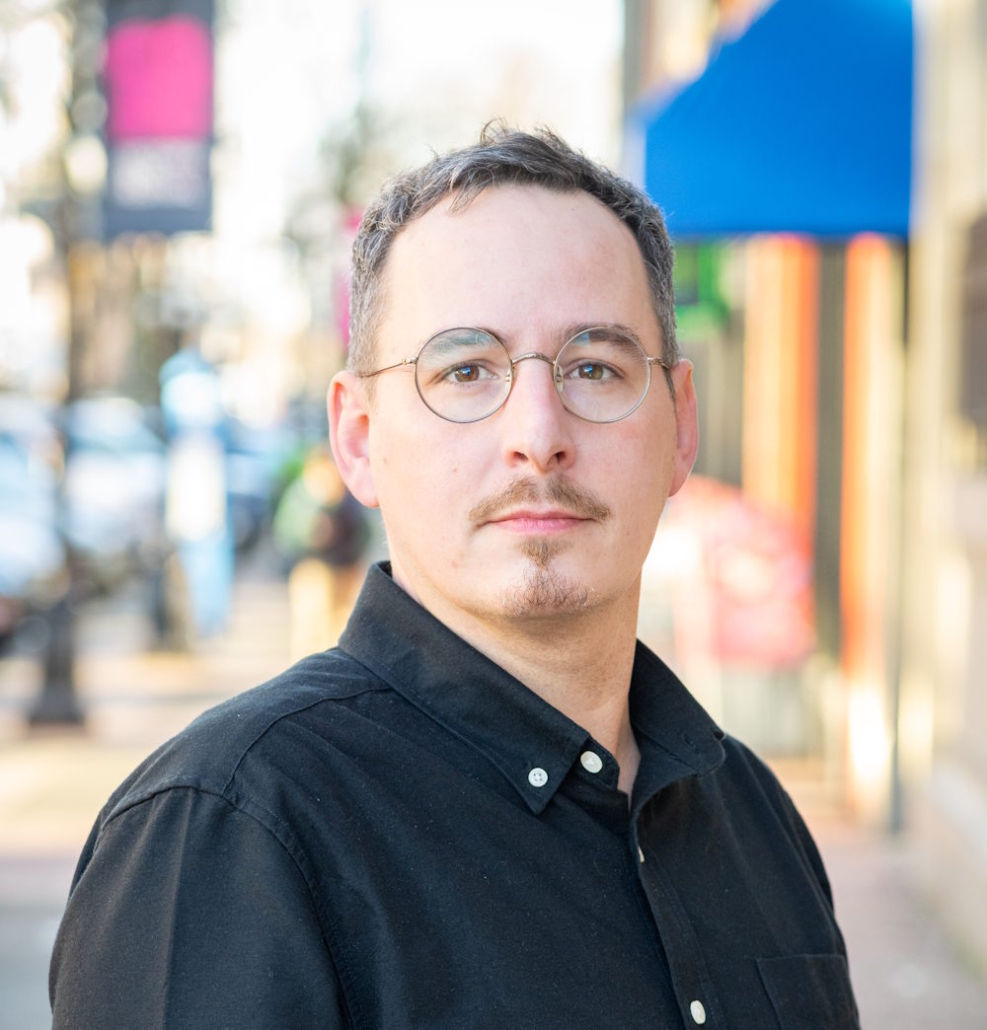 Stephen Portman
Stephen Portman
As the labour relations officer for the UVic chapter, Stephen has a strong background as a union representative for the United Food and Commercial Workers and as a legal advocate with the Together Against Poverty Society.
With a dedicated staff and the unwavering solidarity of our members, we are well-positioned to take on the challenges of 2025. Thank you for your continued engagement and support.
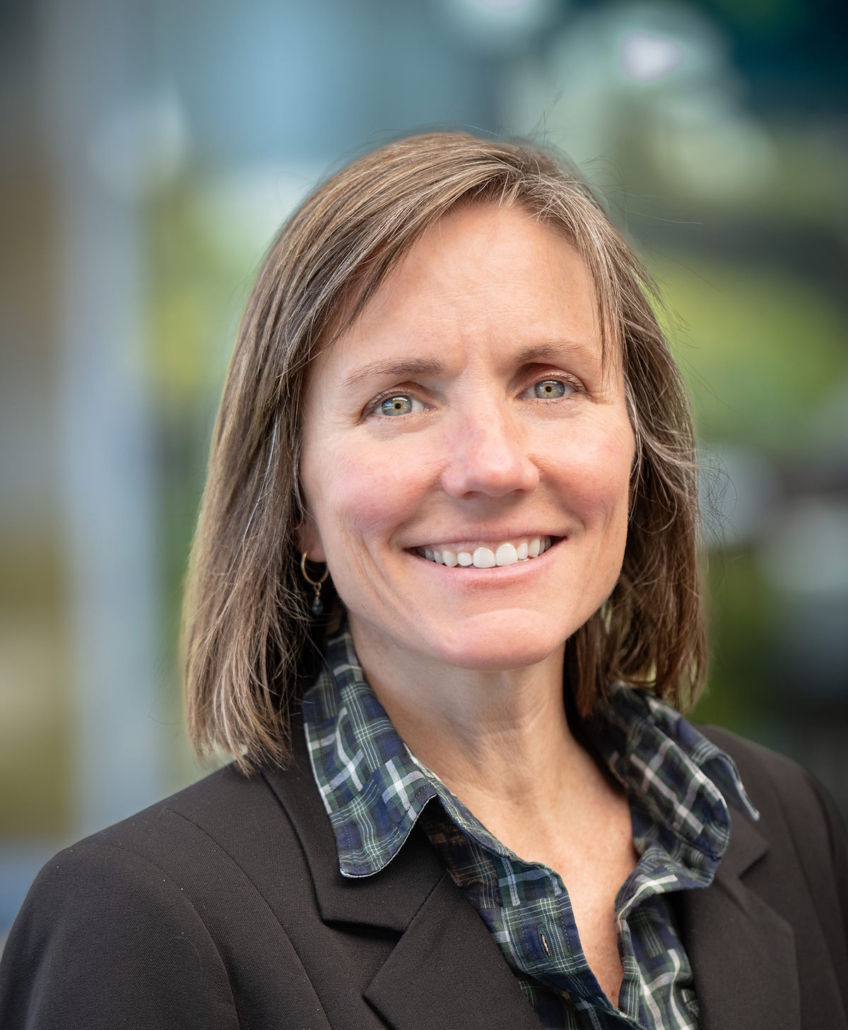 Melissa Moroz
Melissa Moroz
Executive Director
Adventures of a Paralegal
From Dusty Huts to Mountain Sheds, Ali Elman, Law Society Paralegal, Goes Where She's Needed to Help British Columbians Words by Jessica Natale Woollard Photos by Jeff Topham
On one memorable work trip, Ali Elman travelled into the mountains in the middle of winter. She trekked down a snowy pathway to her destination: a wooden shed among the trees, tucked away behind a cottage. What treasures—or hazards—lay within?
Another time, she arrived at her destination to find an old building with mud floors and stone walls. Stepping inside, she felt she had entered ancient catacombs. She proceeded cautiously, steeling her courage to face the secrets lurking in the darkness.
And on yet another adventure, she travelled in a small Bombardier plane to a remote community in south-central British Columbia. When the aircraft veered, flying perpendicular to the mountain, Elman, a nervous flier, put her purpose before her panic and conjured nerves of steel.
“It was heart stopping,” she recalls. “It felt like we were going to kiss the side of the mountain.”
Despite what her work expeditions imply, Elman is not a private investigator, following the story to remote corners of the province. She is not a museum curator seeking relics lost to time. She is not Indiana Jones, hunting down artifacts with unique powers. She is, however, an archaeologist of sorts, excavating documents and analyzing their contents.
Based in New Westminster, Elman is a paralegal in the custodianship department of the Law Society of British Columbia and a member of the PEA. Paralegals and officers of the Law Society are new members to the PEA, joining the lawyers of the bargaining unit in 2023 and 2024 respectively.
The Law Society of BC was founded in 1884 to protect the public by setting and enforcing standards of professional and ethical conduct for lawyers and providers of legal services. They regulate the process of complaints and discipline; hold hearings to adjudicate the conduct of lawyers; advocate on behalf of legal professionals about issues affecting the justice system and legal services in the province; and they help to improve public interest in access to justice.
It used to be that custodians—lawyers appointed to take over another lawyer’s practice—were contracted out. The Law Society would look to their members to find a custodian willing to help another lawyer closing their practice due to illness, retirement or inability to practice due to being removed from the bar. This setup proved incredibly inefficient. Custodians were bogged down, torn between their own practices and the effort needed to support the closure or transfer of their colleagues practices.
About two decades ago, the society decided to bring custodianship in-house and create a department of lawyers and paralegals dedicated specifically to custodianship appointments.
When a custodian takes over a law practice, they are essentially taking over a small business. The Law Society becomes responsible for human resources, taxes, collections from creditors, accounts and sometimes settling outstanding cases. Most custodianships last two to three years, but some can take longer, for example, if the lawyer’s files are complex and involve lengthy disputes.
Custodianship work is always dynamic; there’s always something new.
Custodians are assigned to a case along with an assistant and a paralegal, like Elman. The paralegal on the custodianship team (or “pod,” as the Law Society calls them) is responsible for the logistics of taking over a practice, including banking, flights, hotels and sorting through mounds of documents accumulated over the years.
The work is a treasure hunt, in a way, one that occasionally requires materials to be fumigated or stored in bio hazard boxes to prevent spreading insect infestations or toxic materials.
“For [a lawyer] who might have been practicing for 30+ years, it can mean wading through mountains of files in their basements, sheds, attics, cottages,” Elman explains.
Currently, Elman has approximately 16 cases in her roster. Three other pods of custodianships have roughly the same amount. Even after 18 years in this role with the Law Society, Elman says the work “is always dynamic; there’s always something new.”
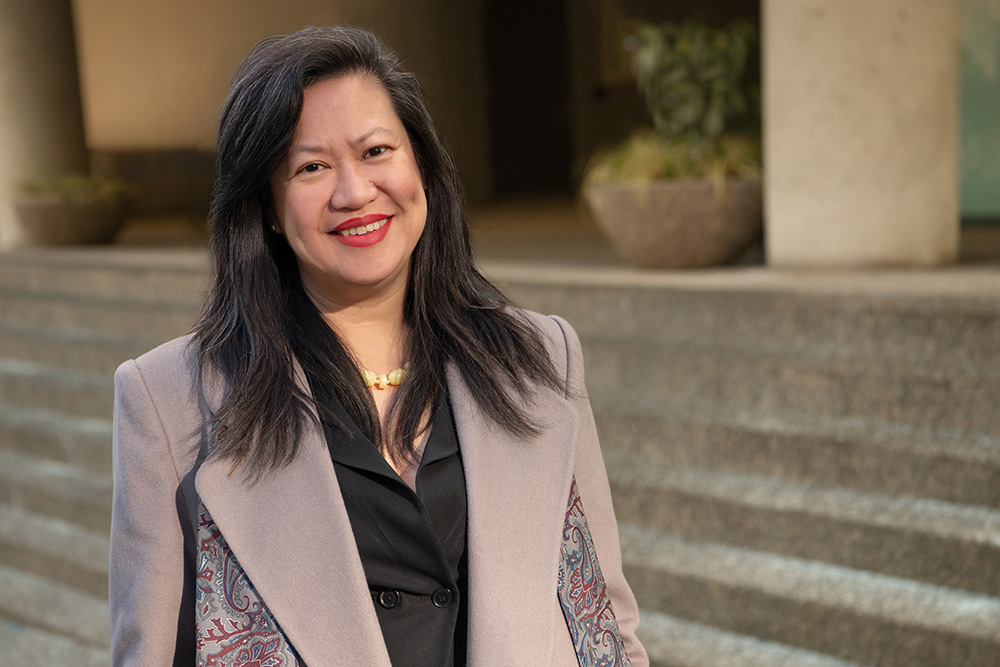
Elman earned her legal assistant certificate from Capilano University in 2003, followed by the paralegal certificate in 2006. She started her career at Kornfeld LLP, a private law practice in Vancouver.
Around 2006, the Law Society was in a period of expansion. The society’s lawyers had recently unionized, and the responsibilities of the society were expanding to include custodianships. Because the program was in its infancy, the Law Society was open to hiring someone new to the profession, Elman explains.
The custodianship department manager tried to warn her off the job, telling Elman: “this is a dirty job. You will be crawling in basements looking at files. You could deal with lawyers who are affiliated with gang members.”
Rather than discouraging her, Elman was persuaded the role suited her perfectly.
“All I kept thinking was, I think this is my job. I think this is mine,” she remembers.
The Law Society employs paralegals in various departments including custodianships, intake and early resolution, practice standards and discipline, the area responsible for investigating lawyers’ professional conduct. Officers, who are also PEA members, also work in departments across the organization.
Elman enjoys the custodianship department because “it’s very service-oriented, very client-centric. We’re helping clients navigate a situation where they’ve lost their lawyers, so we end up getting involved intellectually in people’s lives.”
She thrives in environments where there is much to learn.
“Everything for me is a learning opportunity,” she says.
Joining the PEA has afforded her numerous educational experiences. She represented her department on the interim bargaining committee for the paralegals and represented the paralegals in the recent round of collective bargaining. She has since joined the chapter executive as a member at large.
Attending the Canadian Labour Congress’ Winter School in 2024 and 2025, its 50th anniversary year, were two stand-out learning opportunities in recent years.
“It’s been a while since I looked around a room with so many people and felt like these are my people,” she notes.
She appreciated meeting people with diverse careers, all committed to the labour movement and improving working conditions for all. And, she appreciated the representation and diversity in the room.
“I’m Filipino; I moved here when I was 13 and lived in East Vancouver,” she explains. “The first thing I think about when I walk into a room are issues of diversity.”
One stand-out speaker addressed equity and diversity in collective agreements. She recalls the presenter recommending that “when you craft your collective agreement, you need to think about the ‘least of us.’”
Thinking of the “least of us”—or people in need—is a lesson she has applied to her work and family life. She and her husband have travelled around the world with their two children. Meeting people and experiencing different cultures abroad helps keep the tenet top of mind. Even travelling throughout the province, as she does with work, provides the opportunity to keep learning new ways to support others.
“Thinking of others is very much who I am,” Elman reflects. “In work, in life, whatever you are doing, it’s important to think about the least of us. Then, you move forward.”
Forests For the Future
BC's professional foresters help grow resilient trees to withstand climate change Words by Jessica Natale Woollard Photos by Darren Rico
In the Bear Lake region north of Prince George, an expanse of pine, spruce, Douglas-fir and alpine fir grows strong and resilient. The tree species were carefully selected by professional foresters in British Columbia to produce a site that could sustain variety, withstand climate change and support the ecology and wildlife of the region—mammals, fish, birds, insects and vegetation.
Standing in that forest today, Larry Fielding, a woodlands supervisor with BC Timber Sales (BCTS), is awed at the last 15 years of bountiful growth. He helped reforest the site around 2010.
“It can be difficult for a reforested site to support so many different tree species,” Fielding explains. “But we chose trees that were ecologically suited for the site, and everything is growing really well. It gave me confidence in our work, seeing this healthy, resilient forest.”
The Bear Lake site is an example of successful reforestation that is taking place across the province. Fielding is one of 550 registered professional foresters working in 33 communities in the province for BCTS, part of the Ministry of Forests. Based in Prince George, Fielding became a registered professional forester in 2006, after graduating from the University of Northern British Columbia. He started with BCTS in 2007, helping to sustainably maintain forests on Crown land, which makes up 94 per cent of the province’s total area of 944,735 square kilometers. A woodlands supervisor since 2009, his work focuses on silviculture as well as supervising a team of professional foresters.
“Right now is an exciting time in forestry because there’s a real focus on diversity, wildlife habitat and a lot of different values—and not just timber values,” he explains. “We’re trying to balance economic, cultural, social and biological values. We’re listening to the public, Indigenous people and stakeholders about what they value and what they want to see on the land base.”
Professional foresters in the public service in BC are members of the PEA in the Government Licensed Professionals chapter. Educated in the science of forestry, they play a crucial role in maintaining healthy forests, which is critical to the province’s environmental and economic well being. They focus on reforesting sites that have been harvested for BCTS and helping those new forests thrive.
On average, each silviculture forester like Fielding oversees the planting of approximately two million trees every year. To choose which species to plant, they conduct research into seed varieties, examine climate modelling, explore tree breeding and study and manage for forest health, aiming to maintain as much natural vegetation as possible. Gone are the days of reforesting with monocultures; foresters have learned over the years that single-species forests are not as resilient as those with varied trees types and ages. The more the merrier—their goal is to plant as many species as a site is likely to support.
After planting, professional foresters carefully monitor reforested areas, surveying them regularly to track growth progress and resilience to threats. They gather data and information to continuously improve their work and make good choices for BC’s forests.
“We aim for forests that support wildlife, riparian function, Indigenous cultural values and forest structure. Any day I get out in the field, I learn something,” Fielding adds.
BC has more certified forest land to care for than any other jurisdiction in the world, with the exception of Canada as a whole. The work of our provincial foresters is vital to maintaining this natural resource, especially given recent wildfires, droughts and heatwaves.
“We need forests that, 80 years from now, are going to be as resilient as possible to weather events and climate change,” Fielding says. “It’s very rewarding for me to see a healthy, forested site with trees that I played a role in planting years ago. It gives me a lot of confidence that the forest is going to be healthy and mature and will be available to support BC in the future. It makes me proud.”
Supporting Children for a Stronger BC
Public Access to Free Licensed Psychologists Provides Early Intervention for Children and Youth with Mental Health Concerns Words by Jessica Natale Woollard Photos by Aaron Lutsch
When a child is facing a mental health issue, their whole community is affected. Parents and caregivers may be left feeling helpless, unable to alleviate their child’s pain. Teachers do what they can to encourage attendance and participation in school life, often to no avail. Siblings and classmates, too, feel the effects, as they struggle to build friendships and connect.
“Mental health doesn’t just impact the individual,” says Dr. Katherine Vink, a Victoria-based licensed psychologist with the Ministry of Children and Families (MCFD). “It is exceptionally heartbreaking to see a child struggling. The earlier we can intervene, the better the outcomes are for children. We can help set them up with skills and strategies to cope with challenging experiences and changes in their life.”
In British Columbia, there are approximately 40 public psychologists at MCFD who support children and youth with moderate to severe mental health issues. As PEA members and part of the Government Licensed Professionals chapter, these psychologists are highly trained, coming with at least 10 years of postsecondary education and 1,600 hours of clinical residency. Many of them operate out of child and youth mental health centres located throughout the province.
By the time a family arrives for intake, they have often tried everything to help their child, Vink explains. “You’re seeing people at their most vulnerable. It takes so much courage to ask for help.”
Families can refer themselves to child and youth mental health teams in MCFD; there is no intermediary or doctor’s referral needed. In the intake process, the child or youth will be assigned a psychologist, social worker or other clinician, depending on their need.
Often, licensed psychologists like Vink treat children with severe anxiety or depression and suicidal youth, many who have experienced significant trauma. Psychologists will conduct comprehensive psychological assessments to diagnose the child or youth and develop treatment plans that include evidence-based psychological interventions. Care is usually delivered in a mix of one-on-one sessions and in family and group therapy.
When treating a child and their family, compassion, respect and sensitivity are necessary, says Vink. Licensed psychologists practice in a trauma-informed way and adapt best practices for each patient’s situation, including their family, cultural or community contexts. Relationship building with the whole family is part of the approach and is essential to treatment.
“The psychologist helps the child’s inner circle understand what is happening and develop methods of management and coping,” Vink adds.
Without the service of licensed psychologists through MCFD, the health care system would be overburdened more than it already is. In BC, 70% of primary care visits are reported to be related to mental health issues.
Seeing a psychologist privately is cost-prohibitive for most families.
“The recommended rate in BC [for a private psychologist] is around $235.00 an hour,” Vink explains. “Being able to provide a publicly funded service [through MCFD] reduces barriers and allows people to access support.”
Communities across Canada are reporting a mental health crisis with rising numbers of children and youth facing complex issues. In BC in 2023/2024, MCFD reported serving more than 23,000 children and youth for mental health concerns.
For Vink, early intervention is key.
“If children can access timely and effective mental health treatment, the better off things are going to be for them in 10, 20, 30 years,” she says.
“Psychologists have the skills and expertise to use therapeutic approaches and strategies that evidence tells us works for children and youth.”
Another aspect of the licensed psychologist role involves training future child and youth psychologists. MCFD developed a residency program that is nationally accredited.
“We’re supporting the future of the province when we invest in training psychologists,” Vink adds, noting MCFD has experienced difficulty recruiting and retaining licensed psychologists due to the significant pay discrepancy between public- and private-sector work.
Vink went through the MCFD training program in 2017/2018, while she was a doctoral student in clinical child psychology at the University of Alberta. After working at a hospital in Ontario for three years, she decided to return to Victoria and pursue her career with MCFD.
“I feel so privileged that children, youth and families put trust in me,” she says. “Children and youth are the future. We need to take care of one another in this society.”
Modern Apothecary
Ministry of Health Pharmacists Make Complex Decisions About Medications for the Good of the Province and its Residents Words by Jessica Natale Woollard Photos by Aaron Lutsch
More than 11,000 medications and products were dispensed in British Columbia in 2023 to improve the health of patients. That’s a lot of medications for health care providers to stay on top of—to understand how to prescribe each of them, under what conditions they are most likely to work, and what the expected outcomes are.
Pharmacists are the medication experts of our healthcare system, providing trusted guidance on prescribing. Patients are most familiar with community pharmacists, who serve the public directly at drugstores and pharmacies where they are accessible and maintain relationships with the public.
But, working behind the scenes in the Ministry of Health are over 36 Public Service pharmacists, all members of the PEA’s Government License Professionals chapter.
These Public Service pharmacists are specialists in a range of pharmaceutical sciences, and their work supports their frontline counterparts. In addition to dispensing, they support the availability, funding, coverage and effective use of drugs in the province. For example, some oversee the list (called a formulary) of medications that are available through PharmaCare, BC’s publicly funded program that helps residents pay for many prescription drugs, dispensing fees and some medical devices and supplies. They ensure the medications are effective, prescribed optimally and available in BC, and they participate in the drug review process for new medications.
Other groups of ministry pharmacists help mitigate province-wide drug shortages; review data and ensure medications are used correctly to provide optimal results for patients; and dispense specialty medications to certain government programs, select patient populations and health authorities. Furthermore, some Public Service pharmacists help people access the drugs they need through both PharmaCare and the Special Authority, the division that grants patients full or partial coverage of a drug or medical device that otherwise may not be covered by PharmaCare.
The work of this team is vital to ensure British Columbians have access to safe treatment options for their conditions. Their work aligns with the mission to be responsible to the residents of BC as a whole and to contribute to responsible and appropriate use of public funds.
Victoria-based Boris Trinajstic, one of the province’s 10 Special Authority pharmacists, explains a key difference between a pharmacist in a community drugstore or hospital and a pharmacist working for the BC Public Service.
“When you’re working in a pharmacy, whether a hospital or community setting, you’re heavily focused on individual patient care,” he begins.
“Working for the Ministry of Health, Special Authority pharmacists must also use a sizeable view; decisions around coverage get made on a case-by-case basis, but also have implications on the entire population level. We’re responsible to the residents of BC, and we have to be mindful of everyone. We need to consider precedent and responsible use of public funds when we make decisions around coverage.”
Special Authority pharmacists work collaboratively and consult with physicians and other medical experts in the field through Drug Benefit Adjudication Advisory Committees (DBAAC). The work of these committees often concerns high-cost medications, addressing case-by-case scenarios in which an individual is seeking access to medication not typically covered by the province. The committee recommends to the Special Authority pharmacist whether the medication should be covered by taking into consideration an array of available information, including clinical patient information, diagnostics and therapeutic expertise.
They also contribute to the drug listing process, working with their counterparts on the Formulary Management team to assist with the addition of new medications being considered for the provincial formulary.
Trinajstic is a third-generation pharmacist but the first to work in the Public Service. He graduated in 2020 from the University of British Columbia with a doctor of pharmacy, and, after working as both a community and hospital pharmacist, he opted to work for the Public Service in 2023, drawn to the broader allure of helping all British Columbians.
Keeping the big picture in mind during decision making is key to the role of the Special Authority pharmacist, Trinajstic says, but it needs to be balanced against the needs of individual patients.
“At the end of the day, we serve all BC residents,” Trinajstic says. “Our day-to-day work often involves the critical thinking, evaluation of information, and collaborative professionalism. Whether we are reviewing a case in our DBAAC committees, assisting with a new medication being listed or adjudicating day-to-day Special Authority requests, we want to make sure any precedent-setting decisions are going to have the best impact on individual patient care, but also the wider system, in an evidence-based manner. For instance, if providing access to a certain medication can result in lower healthcare costs and expenditure down the road, we will always take that into consideration when we look at case-by-case scenarios.”
“But at the same time,” he adds, “we have to be mindful of the broader scale and ensure that we are doing our part to contribute to responsible use of public funds. Our goal is to provide the best outcomes we can for not only our healthcare system or individual patients, but also for British Columbians as a whole.”
UVic Chapter History
It's been 30 years since members at the university of victoria came together to organize the professionals on campus From Duty with Dignity by Ben Isitt
In 1995, the PEA organized professionals at the University Victoria—forming the association’s second largest bargaining unit with 400 new members, consisting of academic and administrative professionals. This marked the culmination an organizing effort that extended back more than a decade.
In the winter of 1982-83, PEA organizer Bob Wiseman had embarked on a concerted organizing drive on the campus, endeavouring to extend the benefits of collective bargaining to administrative support staff, graduate students and specialist instructors. While this drive was not successful at the time, it helped to plant the seeds of collective bargaining among employees at the university.
In the 1990s, in the face of budgetary restraint, there was a renewed effort among UVic employees to organize. Over a two-year period beginning in April 1993, an informal staff group coalesced into an organized force, encompassing a diverse body of employees: administrative officers, systems specialists, program coordinators, academic assistants, laboratory instructors and others.
This group canvassed several different labour organizations to assess options for affiliation, and chose to pursue bargaining rights through the PEA. An organizing drive was launched in the spring and summer of 1995, with more than 55% of professionals in the proposed bargaining unit signing membership cards. On September 7, 1995, the PEA was certified by the BC Labour Relations Board to represent academic and administrative professionals at the University of Victoria.
In the wake of this certification victory, the association and organizing committee convened a meeting to form a UVic chapter, where a provisional constitution was adopted and a chapter executive elected. Contract proposals were drawn up and negotiations for a first contract opened with the university in January 1996. Questions over jurisdiction and the scope of the bargaining unit were also addressed through negotiation with CUPE Local 951, which represented other campus employees, as well as with the employer over the extent of management exclusions. Progress at the negotiating table was slow and uneven. “The pace won’t be confused with the Indianapolis 500,” The Professional quipped.
Stumbling blocks were encountered on issues such as hours of work, with the employer resisting contract language defining the 35-hour weekly work schedule, as well as provisions on overtime and salary. UVic offered a maximum of pay increase of 1.75%, while the PEA demanded salary progression at a higher rate; 130 PEA members who attended a union meeting in June 1996 concluded that the university’s offer was insufficient to reach a first contract “without a confrontation.”
When classes resumed in September 1996, the PEA responded to the university’s intransigence after eight months of negotiations by scheduling a strike vote. This forced the employer’s hand, and on the evening of September 17, 1996—36 hours before the strike vote was scheduled to occur—the PEA’s negotiating team reached a tentative agreement with the university, providing for annual salary progression of 3% over the life of a three-year agreement. UVic members ratified the agreement with a vote of 206 to 1, and the contract was signed with the university in October 1996.
Table Talk
Meet the Association Executive Table Officers Who Were Elected During Our 2024 Convention
 Cliff Hamas
Cliff Hamas
University of Victoria
Professional Title: Senior Academic Assistant, Faculty of Fine Arts
Years with the PEA: 20
1. What was your very first job?
Dishwasher at the Olympic Flame: a lovely, family-run Greek restaurant in SW Calgary. I made $2 per hour with access to all the Dr Pepper I could consume. Bliss for this 14-year-old.
2. You have 60 minutes of free time, no deadlines and no responsibilities. How do you pass the time?
Play with my cats if I’m at home. Hiking, walking, or birding if I’m outside.
3. What’s one thing that can instantly make your day better?
A thunderstorm with heavy rain.
4. What is the most useless talent you have?
I have confirmed that I can still code in BASIC and I will never do either of those things again.
5. What phrase do you most overuse at work?
Looks like your adapter is toast.
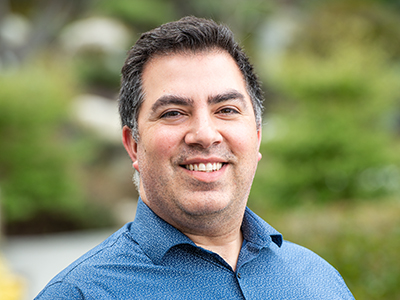 Jeremy Oregon
Jeremy Oregon
Legal Aid BC
Professional Title: Managing Lawyer, Parents Legal Centre Campbell River
Years with the PEA: 6
1. What was your very first job?
English as a second language summer camp counsellor at Simon Fraser University.
2. You have 60 minutes of free time, no deadlines and no responsibilities. How do you pass the time?
I love to knit or crochet while watching funny videos on YouTube with my kids.
3. What is the most useless talent you have?
I can fall asleep anywhere, sitting, standing, or even walking.
4. Favorite city or country to visit and why?
I recently went to Argentina where my father is from and was able to connect with my heritage and culture in a new way and meet extended family still living there.
5. What phrase do you most overuse at work?
I always say “Can’t complain” whenever someone asks me how I am doing. The truth is I am pretty good at complaining and will do once you get to know me.
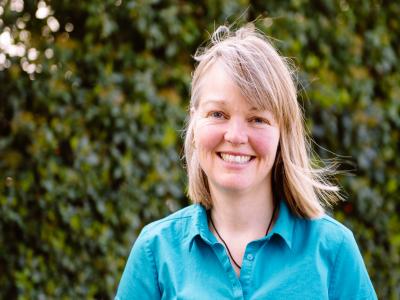 Ronda Field
Ronda Field
Heath Science Professionals
Professional Title: Physiotherapist
Years with the PEA: 15
1. What was your very first job?
Working in small Spanish restaurant.
2. You have 60 minutes of free time, no deadlines and no responsibilities. How do you pass the time?
Travel planning and language learning.
3. What is the most useless talent you have?
Packing a large amount of stuff into a small space.
4. What’s one condiment you can’t live without?
Dijon mustard.
5. Favorite city or country to visit and why?
Spain.
6. What phrase do you most overuse at work?
Awesome.
7. Do you have a pet?
Two cats who are litter mates: Mittens is warm and cuddly, often wants to be in a sling while I’m working and Mystery is shy but loving, and sleeps with me.
 Ed Margawang
Ed Margawang
Government Licensed Professional
Professional Title: Pharmacist
Years with the PEA: 15
1. What was your very first job?
I was with the Sea Cadets, which is run by the Canadian Department of National Defence, from ages 13 to 18 and spent my summers with them across Canada and in the US.
2. You have 60 minutes of free time, no deadlines and no responsibilities. How do you pass the time? Watching sporting events and highlights. I follow the Canucks in the winter and the BC Lions in the summer.
3. What’s one thing that can instantly make your day better?
Playing with my dog Kenzo. I can’t get enough of him.
4. What phrase do you most overuse at work?
Sorry I’m late.
5. Do you have a pet?
Kenzo is a Boston Terrier who became part of our family during the pandemic. He’s wild and playful but also very sensitive. He’s so cute he even has his own Instagram.
PEA Updates
 GLP Lobbying
GLP Lobbying
In February, we had a productive meeting with the Minister of Finance, Brenda Bailey, and her Chief of Staff, Kelly Sather, reinforcing the crucial role that GLP members play in the safety, sustainability and resilience of our province. We emphasized that, particularly in times of economic uncertainty, the province must lean on the expertise and dedication of its licensed professionals to maintain stability and drive economic growth.
 Happy Retirement
Happy Retirement
Congratulations to long time GLP local rep Paul Van Westendorp, “the bee guy” on his retirement this year. Paul has been the provincial apiarist for BC since 1989 and has served as local rep for the majority of his career. He was profiled in The Professional in 2020 and his photo (featured here) won multiple awards, including best photograph from the Canadian Association for Labour Media and from the International Association for Labour Media.
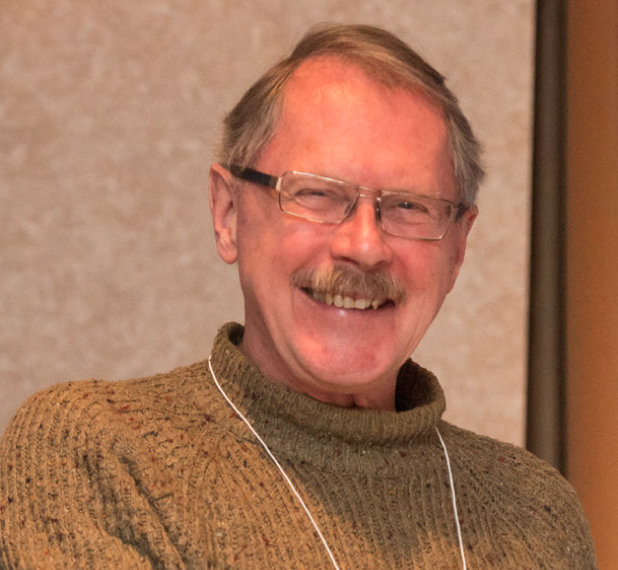 In Memoriam
In Memoriam
We were saddened to hear that former UVic member Tom Gore passed away on February 7, 2025. To say Tom Gore was involved with the PEA is an understatement. He wrapped up a 40-year career with UVic as a Senior Scientific Assistant in 2013. As an activist he was involved with the PEA since UVic certified with the union in 1995 and has spent 11 consecutive years on the PEA Executive, nine of those as a table officer. From organizing campaigns, to contributing to the UVic chapter executive, Tom saw the PEA through nearly 16 years of action.
We acknowledge and respect the lək̓ʷəŋən peoples and the Songhees and Esquimalt Nations on whose traditional territory we work.
Join the Professional
Want The Professional delivered directly to your email inbox? Sign up for e-delivery today!



